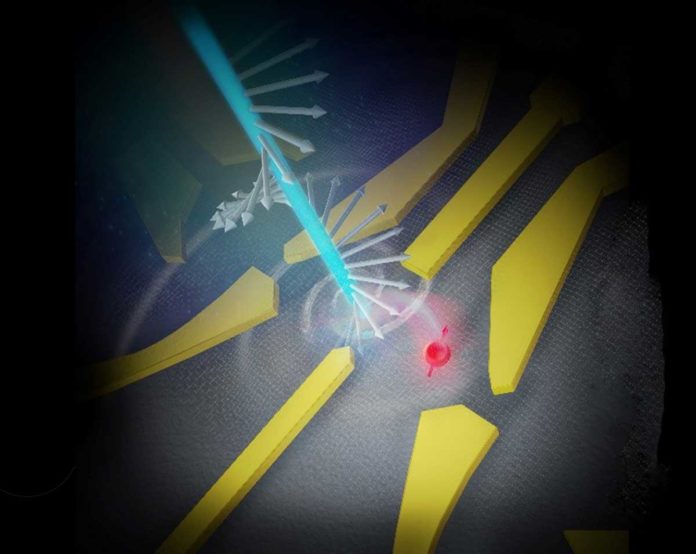Quantum computers can potentially beat current systems with their completely different working. Instead of processing information in 0s and 1s, quantum computers encode information as quantum bits, or qubits, which can exist in superposition.
Besides, the states of two or more objects can be entangled, so the status of one can’t be depicted without this other. Dealing with entangled states enable quantum computers to assess numerous conceivable outcomes all the while, as well as transmitting data from place to place immune from eavesdropping.
However, these entangled states can be very fragile, lasting only microseconds before losing coherence. To realize the goal of a quantum internet, over which coherent light signals can relay quantum information, these signals must be able to interact with electron spins inside distant computers.
Scientists at the Osaka University recently demonstrated how information encoded in the circular polarization of a laser beam can be translated into the spin state of an electron in a quantum dot, each being a quantum bit and a quantum computer candidate. Scientists used laser light to send quantum information to a quantum dot by altering the spin state of a single electron trapped there. While electrons don’t spin in the usual sense, they do have angular momentum, which can be flipped when absorbing circularly polarized laser light.
First author Takafumi Fujita said, “Importantly, this action allowed us to read the state of the electron after applying the laser light to confirm that it was in the correct spin state. Our readout method used the Pauli exclusion principle, which prohibits two electrons from occupying the same state. On the tiny quantum dot, there is only enough space for the electron to pass the so-called Pauli spin blockade if it has the correct spin.”
Senior author Akira Oiwa said, “Quantum information transfer has already been used for cryptographic purposes. The transfer of superposition states or entangled states allows for completely secure quantum key distribution. This is because any attempt to intercept the signal automatically destroys the superposition, making it impossible to listen in without being detected.”
The rapid optical manipulation of individual spins is a promising method for producing a quantum nano-scale general computing platform. An exciting possibility is that future computers may be able to leverage this method for many other applications, including optimization and chemical simulations.
